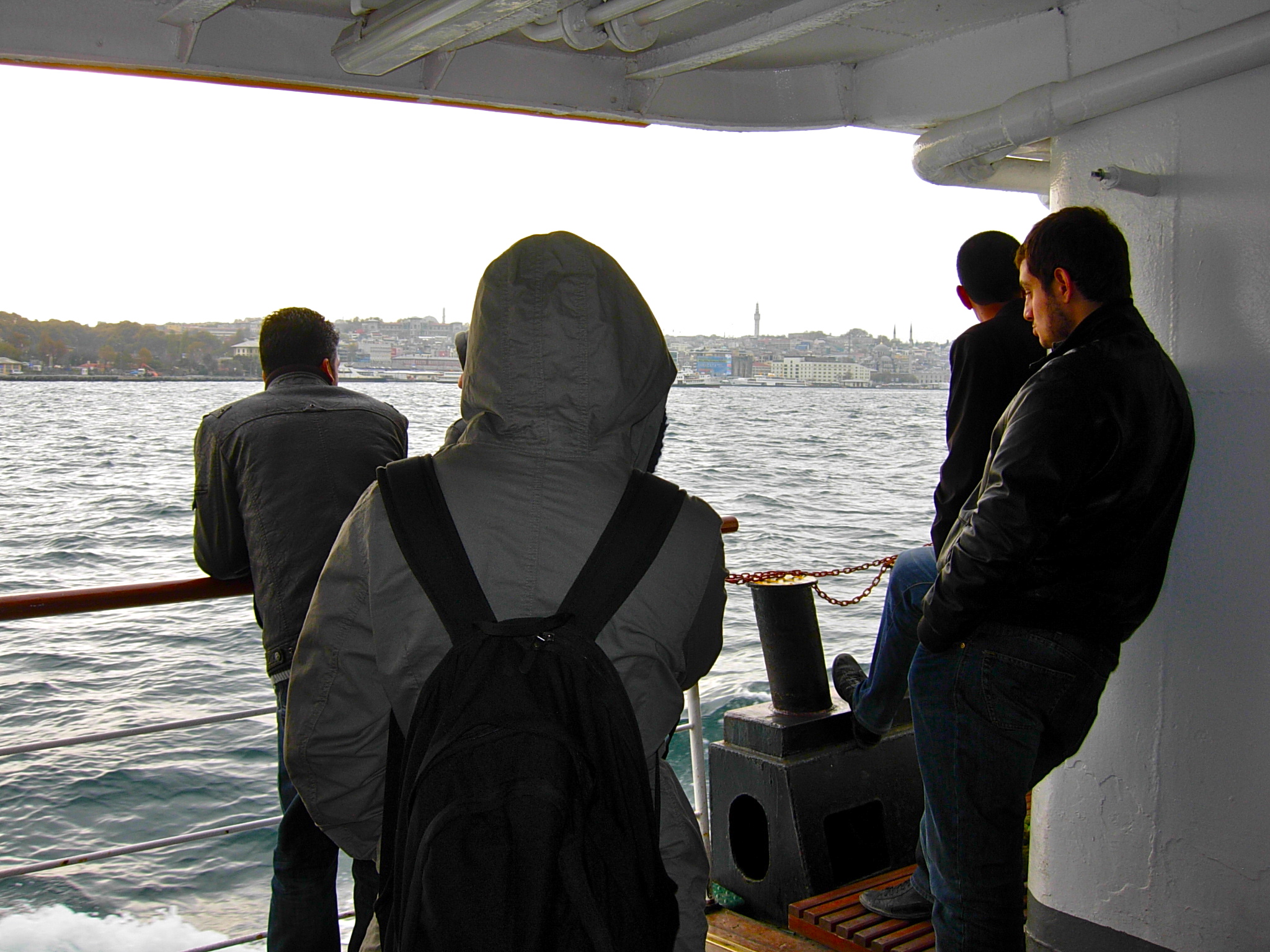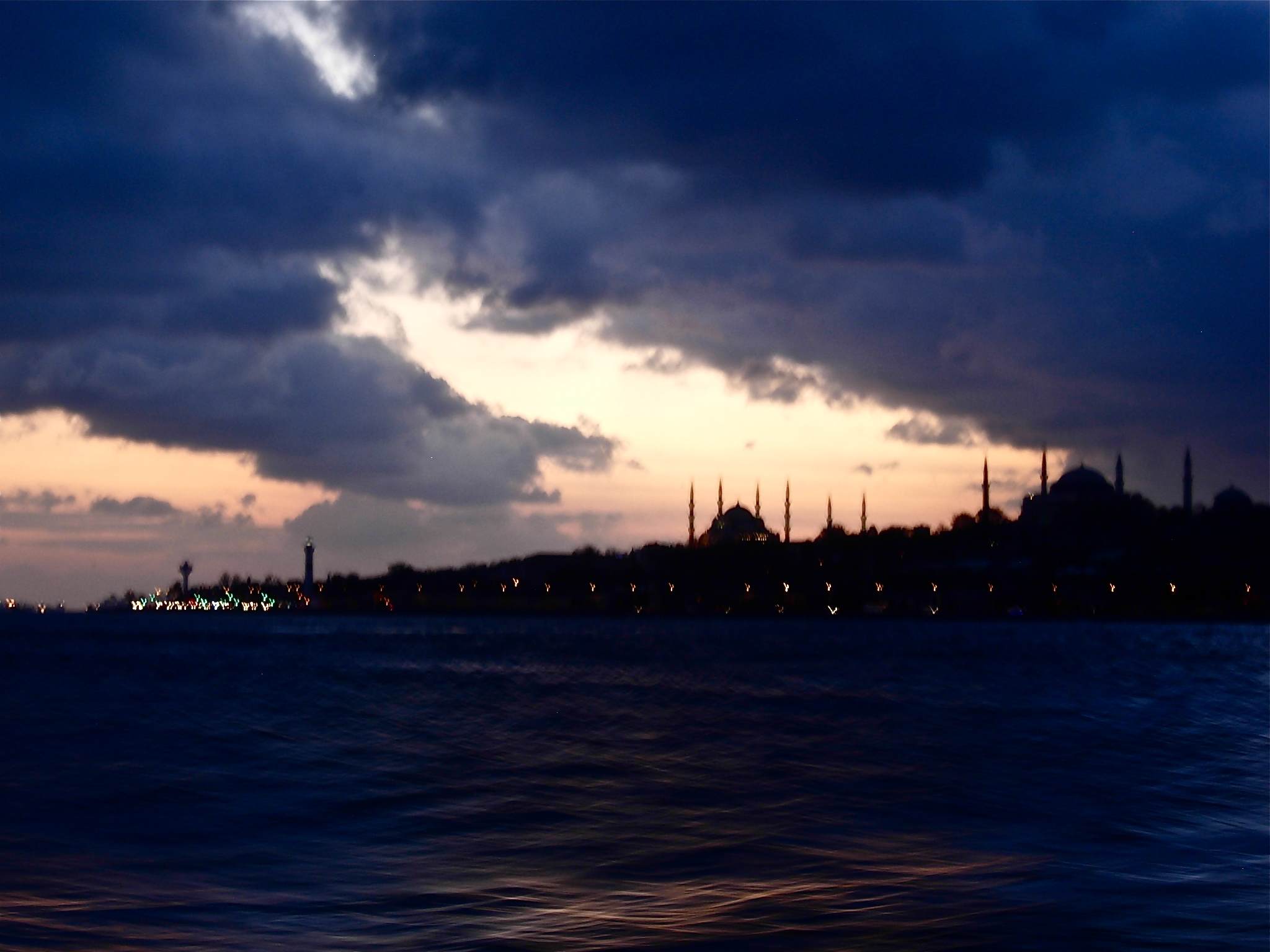From Istanbul to Kreuzberg
Walking down the main boulevard of Istanbul, in Taksim, İstiklal, one is swept up in a mass of humanity that makes Berlin feel like a village. I walk into a German-Turkish bookstore, then to a rooftop bar in the same building as the Goethe Institute, with a view down to the tankers and steamers carving the waters, the view of Haghia Sophia and the mosques below. All around me was visual proof of the majesty of a sophisticated urban capital. And, while I know Turkey has been hit too by financial trouble, my friends in Istanbul kept telling me they can’t feel the crisis, that things have never been better, that Turkey is the future, not Europe, and perhaps they need no longer look West.
I think a lot about Istanbul in Berlin, living in Kreuzberg, where the largest population of Turks outside of Turkey also resides. And I often wish that Berliners, the minority who happen to be narrow-minded and racist, should visit this great metropolis of perhaps 15 million.
I am attracted to this former Imperial capital: its architectural sophistication, its spectacular setting over the straits, its mixing of the so-called Occidental and Oriental. Its vibrant drive is an antidote to the occasional racist slur, an answer to stereotypes about how backward the East might be, an opportunity to counter the belief that Turkey has nothing to contribute to German culture.
On this visit, I was most interested in what people in Turkey thought about Berlin and Turkish-descended residents abroad. And whether Turks in Germany eventually might have more opportunities if they came back to the land of their ancestors.
I went to a party in Taksim and asked my questions. Organised by an association promoting networking between international communities, there as a hefty door charge (to keep the wrong people out, I was told), and plenty of bling. Perhaps 80% was Turkish, middle class, prospering, and everywhere I went I was told that Turks in Germany are just as much a ‘problem’ for Turkey as for Germany.
I was not entirely unprepared for this negative reaction. A year ago, I met a professor from an Istanbul university visiting for a Freie Universität conference in Berlin. I asked her, in a Kreuzberg bar, whether she enjoyed being in a neighbourhood with so many people of Turkish descent. She looked at me, as if shocked by my ignorance, and said: ‘I have nothing in common with these people. They’re like animals. They are backward and superstitious. I come from the capital’.
Taking the ferry from Europe to Asia across the Bosphorus, I had an explanatory conversation with a Turkish friend who works in the export trade. He harbours no prejudice whatsoever against the Turkish population abroad, but he explained it’s not unusual for most secular Istanbulites to despise the traditional Turks who live in Germany.
He explained it as follows: already in Istanbul there is a strong prejudice against those who come from the country’s hinterland. The coastal areas of Istanbul are, for the most part, affluent and secular. These populations, in Kemalist Kadıköy or funky Chihangir with its lattés and DJ’s, refer to themselves as ‘white Turks’ and refer to the country’s majority poor, religious, traditional, often from Anatolia, as ‘black Turks’. I told him, ‘You’re kidding me!’ He replied, ‘What? You thought Europe had the monopoly on racism?’
Members of the Turkish emigré population in Germany, and those descendants who returned to Turkey, are referred to disparagingly as ‘Alemance’ or ‘Deutschlings’ or ‘German-ish’. It is a population clearly stuck in a rut of non-acceptance by both cultures. They were recruited to work in Germany not from wealthy secular urbanites (who form much of the immigrant base of, say, Canada’s Turkish population) but from the poor countryside that is also disparaged at home.
He explained the reason why the Turkish academic I met in Berlin had such a strong reaction. Many Turks I met in Istanbul feel that the ‘Alemance’ give Turkey a bad name abroad. They feel that when Europeans think of Turkey, they think of a people a world apart from Istanbul. And they blame this image of Turkey as a major factor in resistance to allowing Turkey to join the European Union.
Of course, in the nightclubs around Taksim, or the luxury malls of Levant, I did not see veiled Turks, and men with religious beards, who look like the Berliners of Turkish origin I see on the Maybachufer Market in Kreuzberg, or leaving the Mosque near Tempelhof. In Istanbul, I hardly saw such people, perhaps only in the bazaar selling their wares. And yet, they constitute the grand majority of the Turkish population, outside of the cores of cities like Istanbul, Izmir and Ankara (but they dominate the peripheries of those cities).
They were the source of an explosion of population growth in the 60s and 70s. This population fed not only Germany’s ‘guest worker’ program, thirsty for cheap labour (there were almost 3 million of them in Europe by the end of the 70s), but also the population explosion in major Turkish cities. In Europe, many of them formed parallel societies which were often more traditional than those found back in Turkey. The European governments’ attitude that this work force was temporary (in the end, of course, they stayed) meant that there was a dearth of government initiative to foster integration (the immigrants themselves, many of whom had little education when they arrived in Germany, were later blamed for not educating themselves). But the strong reaction of secular Turks in Istanbul is about what I might call a ‘mirror-image emigration’ that happened both within Turkey and from Turkey to Germany. The distance from a village near Van in the far East of the country to Istanbul is almost as many worlds away as from Van to Stuttgart. As a result, I met secular Turks using language like racist Germans I’ve met in Berlin.
My flight arrived back to Berlin in the late evening. The roads were eerily empty. I felt confused. It wasn’t just that the weather was strangely warmer than in chilly Istanbul. Past midnight, I made my way to Kottbusser Tor in Kreuzberg, with its mix of punks and immigrants, ordered a Pide in a kebab shop, drank Ayran, to soften the transition. Then I stopped by one of my favourite cafés, built into an immigrant housing estate, Café Kotti.
Café Kotti is filled with a sexually ambiguous mix of Turkish-Germans, Turkish-Arabs, foreigners and old-stock Germans. I had a tea that tasted like one I’d had in Taksim. The music was electronic, a mix of Turkish sounds and then minimal techno. A group of veiled women enter, no one notices them, they take tea together in a corner and laugh. Some old men from the betting office next door come in an order coffee, oblivious to the Arab men on the couch running their hands through each others’ hair. And I realised that I had been mistaken.
I had wanted to send the narrow-minded to Istanbul to learn about the variety of human experience that might be eventually possible within an immigrant community. They’d do much better to just walk up the street to Kottbusser Tor.
I know that I will taking my Istanbul visitors there as well.



